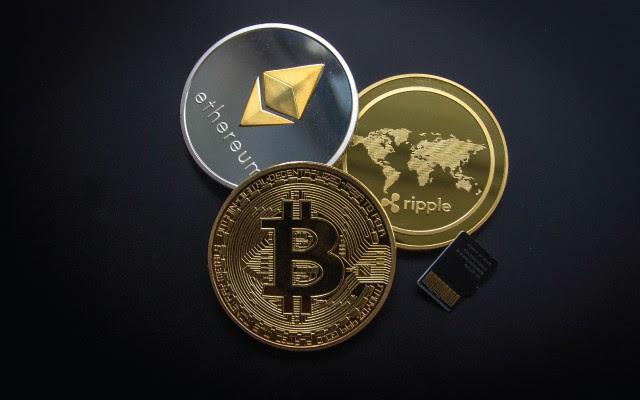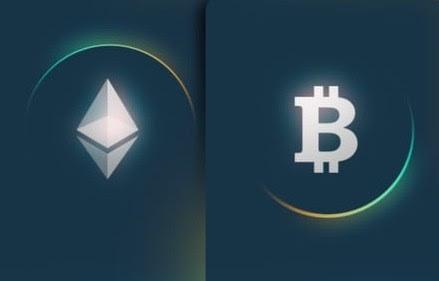
Bitcoin vs. Ethereum: An Overview
Ether (ETH), the cryptocurrency of the Ethereum network, is the second most popular digital token after bitcoin (BTC). As the second-largest cryptocurrency by market capitalisation (market cap), comparisons between Ether and bitcoin are only natural.1
Ether and bitcoin are similar in many ways: Each is a digital currency traded via online exchanges and stored in various types of cryptocurrency wallets. Both of these tokens are decentralised, meaning that they are not issued or regulated by a central bank or other authority. Both make use of the distributed ledger technology known as blockchain.
However, there are also many crucial distinctions between the two most popular cryptocurrencies by market cap. Below, we’ll take a closer look at the similarities and differences between bitcoin and ether.
KEY TAKEAWAYS
Bitcoin signaled the emergence of a radically new form of digital money that operates outside the control of any government or corporation.
With time, people began to realise that one of the underlying innovations of bitcoin, the blockchain, could be utilised for other purposes.
Ethereum proposed to utilise blockchain technology not only for maintaining a decentralised payment network but also for storing computer code that can be used to power tamper-proof decentralised financial contracts and applications.
Ethereum applications and contracts are powered by ether, the Ethereum network’s currency.
Ether was intended to complement rather than compete with bitcoin, but it has nonetheless emerged as a competitor on cryptocurrency exchanges.
Bitcoin Basics
Bitcoin was launched in January 2009. It introduced a novel idea set out in a white paper by the mysterious Satoshi Nakamoto—bitcoin offers the promise of an online currency that is secured without any central authority, unlike government-issued currencies. There are no physical bitcoins, only balances associated with a cryptographically secured public ledger.
Although bitcoin was not the first attempt at an online currency of this type, it was the most successful in its early efforts, and it has come to be known as a predecessor in some way to virtually all cryptocurrencies that have been developed over the past decade.
Over the years, the concept of a virtual, decentralised currency has gained acceptance among regulators and government bodies. Although it isn’t a formally recognised medium of payment or store of value, cryptocurrency has managed to carve out a niche for itself and continues to co-exist with the financial system despite being regularly scrutinised and debated.

Key Differences
While both the Bitcoin and Ethereum networks are powered by the principle of distributed ledgers and cryptography, the two differ technically in many ways. For example, transactions on the Ethereum network may contain executable code, while data affixed to Bitcoin network transactions are generally only for keeping notes. Other differences include block time (an ether transaction is confirmed in seconds, compared to minutes for bitcoin) and the algorithms on which they run: SHA-256 for Bitcoin and Ethash for Ethereum.
Both Bitcoin and Ethereum currently use a consensus protocol called proof of work (PoW), which allows the nodes of the respective networks to agree on the state of all information recorded on their blockchains and prevent certain types of economic attacks on the networks.11 In 2022, Ethereum will be moving to a different system called proof of stake (PoS) as part of its Eth2 upgrade, a set of interconnected upgrades that will make Ethereum more scalable, secure, and sustainable.
A major criticism of proof of work is that it is highly energy-intensive because of the computational power required. Proof of stake substitutes computational power with staking—making it less energy-intensive—and replaces miners with validators, who stake their cryptocurrency holdings to activate the ability to create new blocks.
More importantly, though, the Bitcoin and Ethereum networks are different with respect to their overall aims. While bitcoin was created as an alternative to national currencies and thus aspires to be a medium of exchange and a store of value, Ethereum was intended as a platform to facilitate immutable, programmatic contracts and applications via its own currency.
BTC and ETH are both digital currencies, but the primary purpose of ether is not to establish itself as an alternative monetary system but rather to facilitate and monetise the operation of the Ethereum smart contract and dApp platform.
Ethereum is another use case for a blockchain that supports the Bitcoin network and theoretically should not really compete with Bitcoin. However, the popularity of ether has pushed it into competition with all cryptocurrencies, especially from the perspective of traders. For most of its history since the mid-2015 launch, ether has been close behind bitcoin on rankings of the top cryptocurrencies by market cap.1
The Ethereum ecosystem is growing by leaps and bounds, thanks to the surging popularity of its dApps in areas such as finance (decentralized finance, or DeFi apps), arts and collectibles (non-fungible tokens, or NFTs), gaming, and technology. This has enabled ETH to surge 510% in 2021 (as of Nov. 29, 2021), compared with a 93% gain for BTC. As a result, while ETH’s market cap was only about one-tenth of BTC’s in January 2020, ETH’s market cap of $528 billion was about one-half that of BTC’s $1.08 trillion as of November 2021.
What is the main difference in application between Bitcoin and Ethereum?
Bitcoin is primarily designed to be an alternative to traditional currencies and hence a medium of exchange and store of value. Ethereum is a programmable blockchain that finds application in numerous areas, including DeFi, smart contracts, and NFTs.
Why is Bitcoin compared to digital gold and Ethereum to digital silver?
Bitcoin is compared to digital gold because it was the very first cryptocurrency and is the biggest with a market cap exceeding $1 trillion, while its limited supply (the maximum number of Bitcoins that can be mined is 21 million) may ensure that it retains value. Ethereum is compared to digital silver because it is the second-largest cryptocurrency by market cap and, like the precious metal, has a wide variety of applications.
What are Bitcoin’s and Ethereum’s shares of the crypto market?
As of Nov. 29, 2021, Bitcoin had a market cap of $1.08 trillion, accounting for about 48% of the total cryptocurrency market, which was valued at just over $2.25 trillion.13 Ethereum, with a market cap of $528 billion, had a market share of 23.4%.
How many BTC and ETH are currently in circulation?
www.FinTech-Start-Up.com




.jpg)


.jpg)



